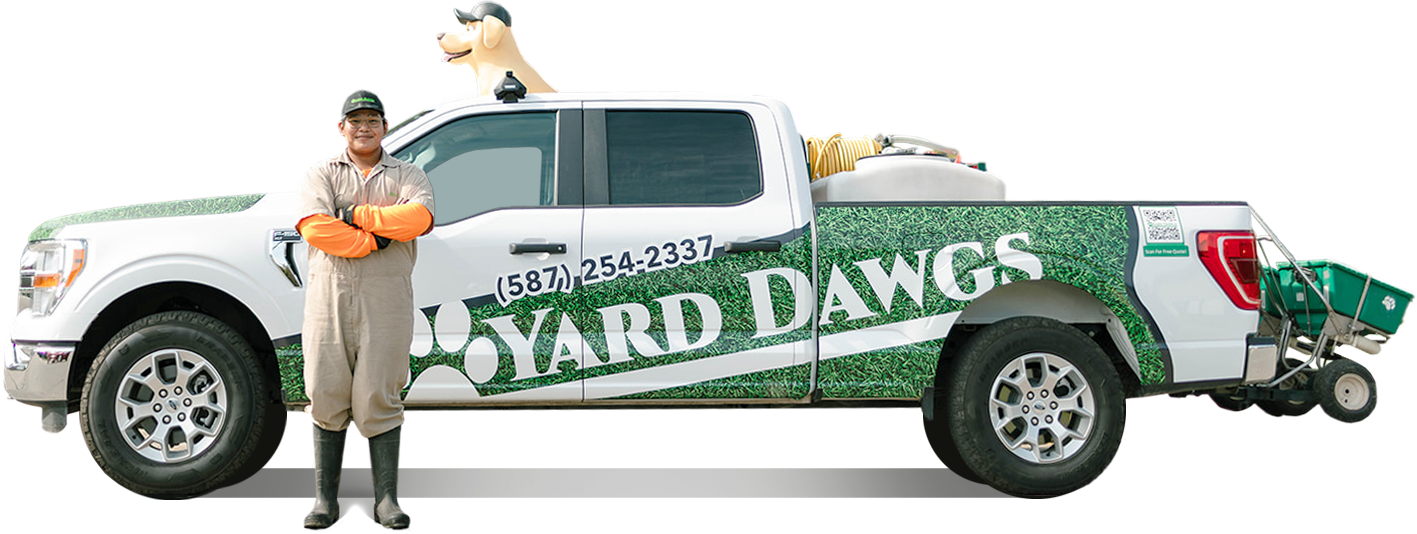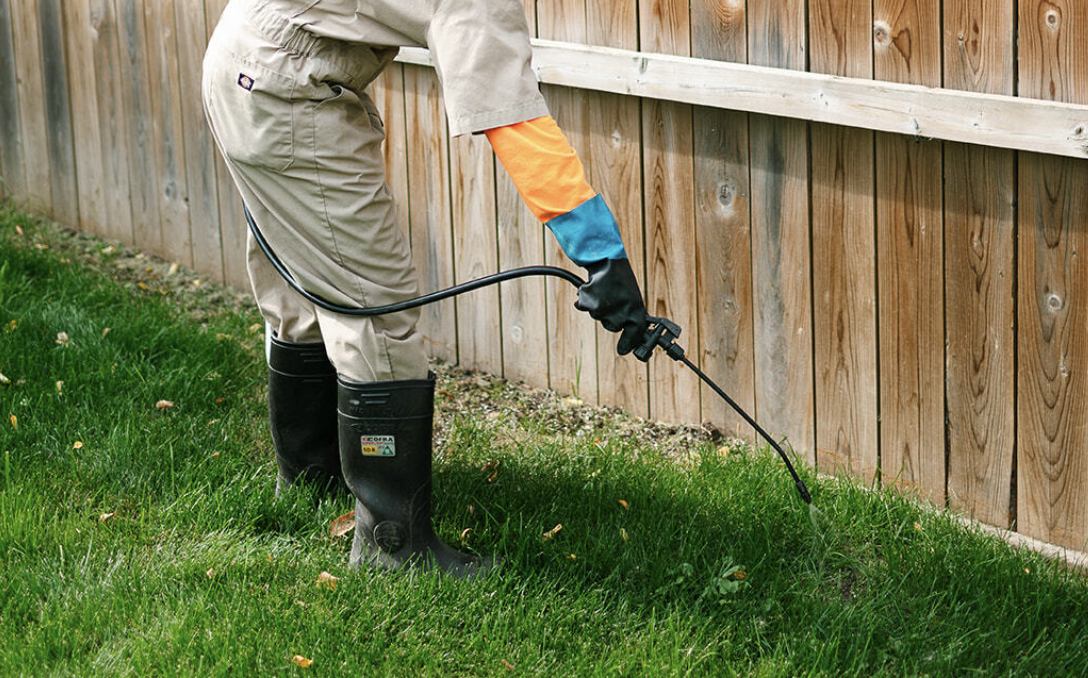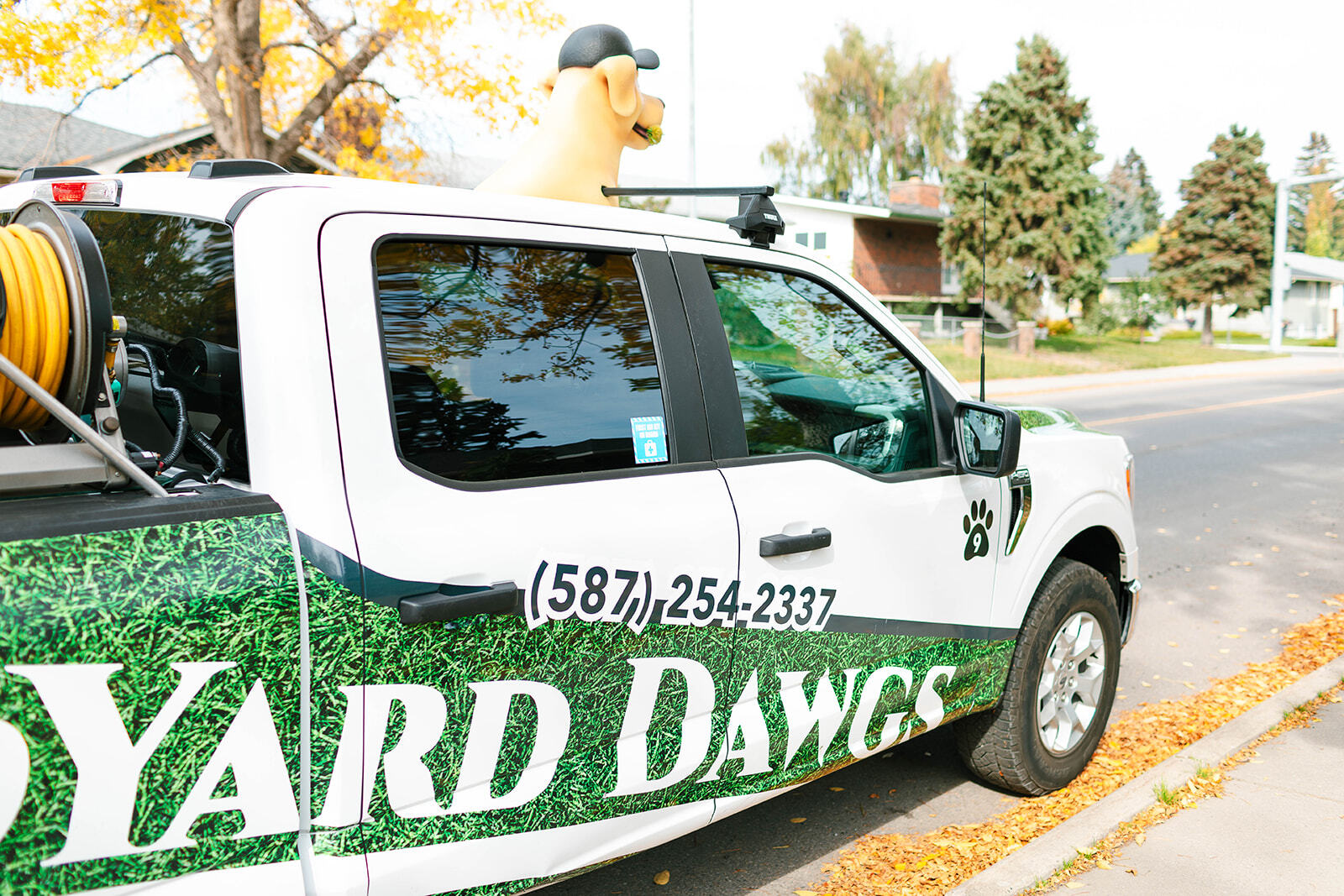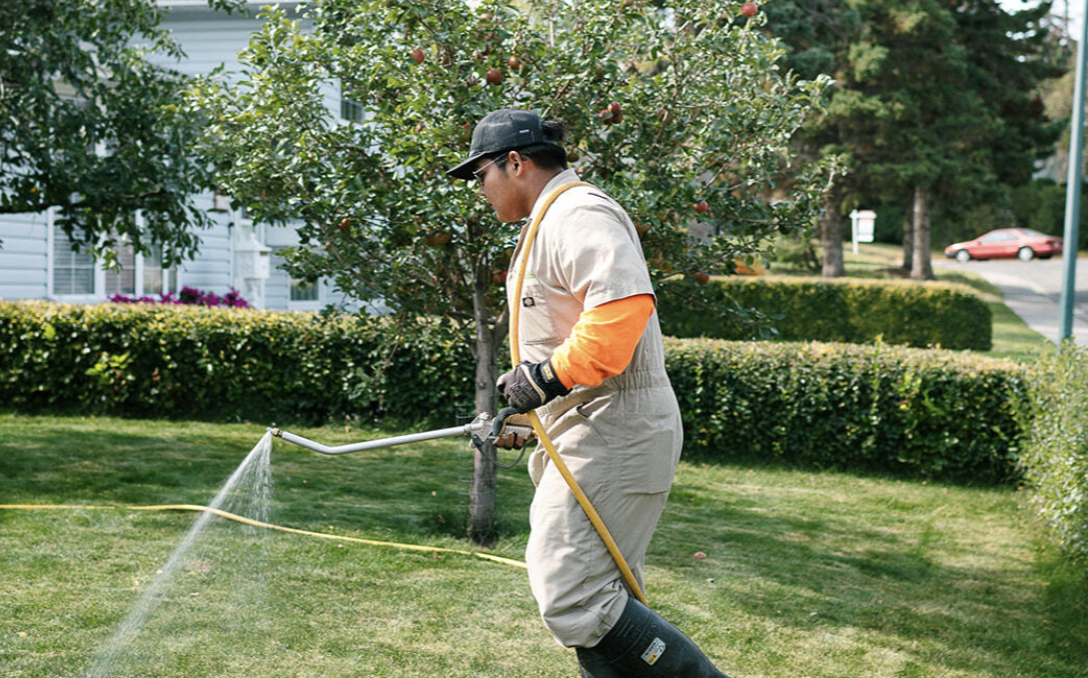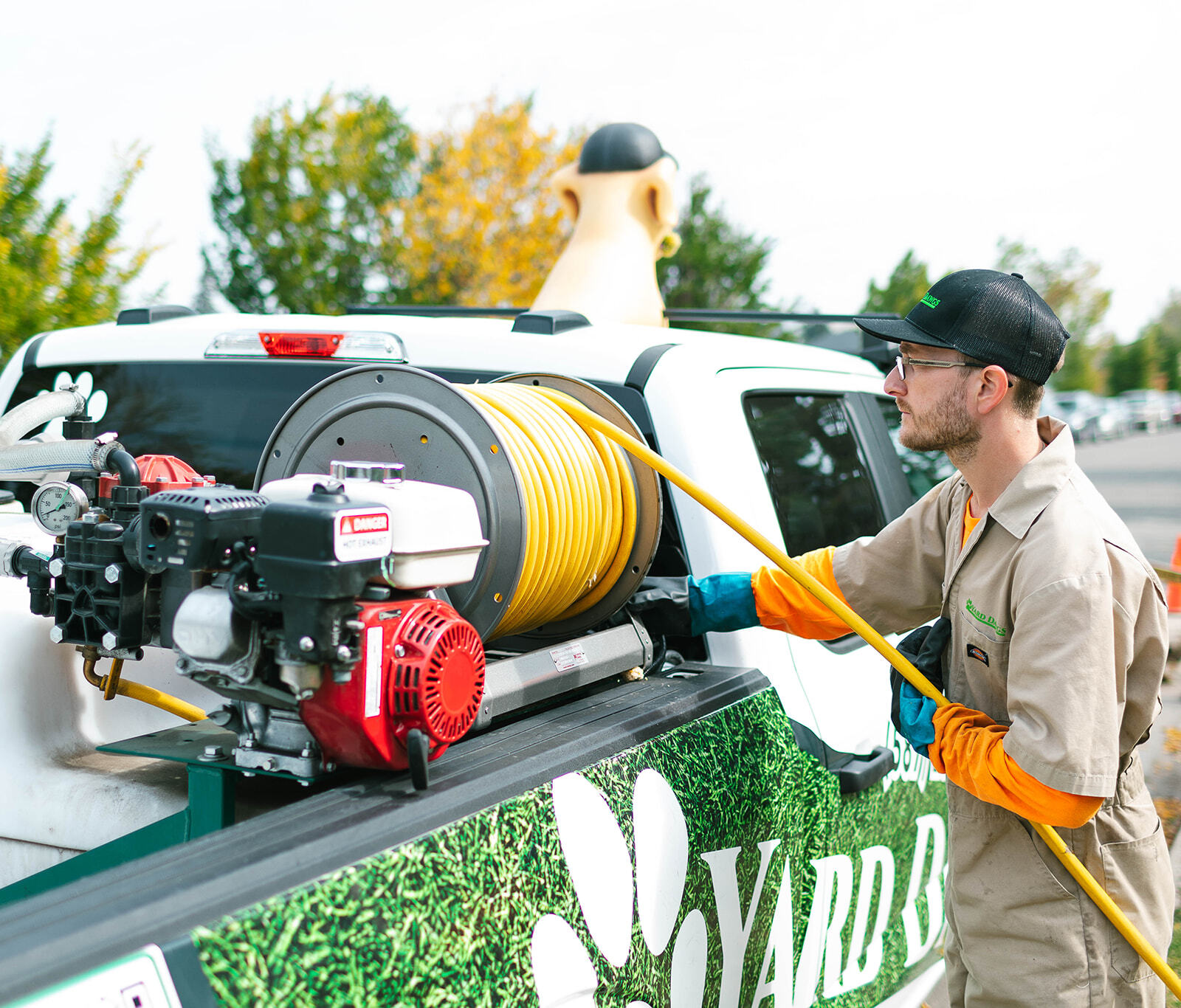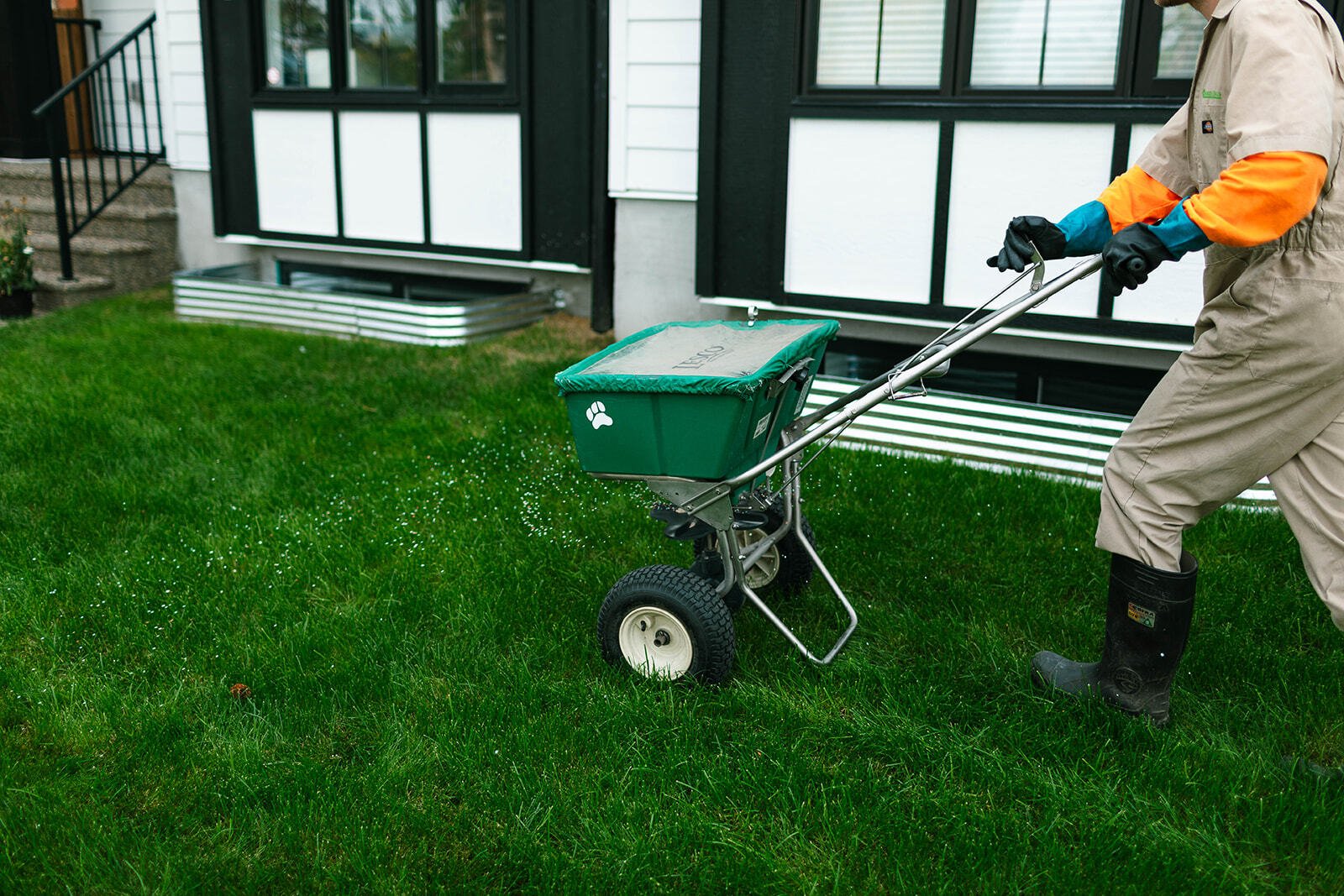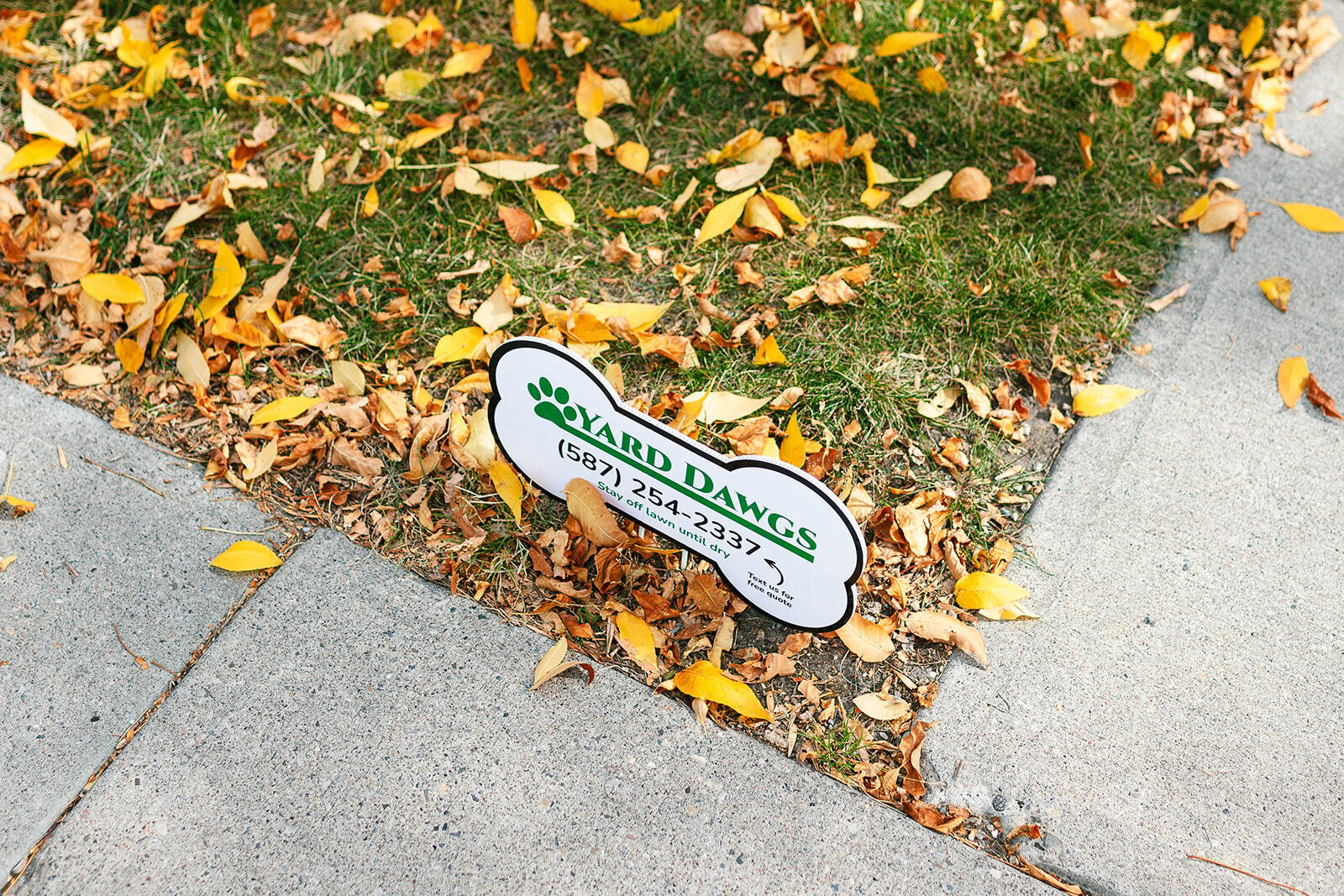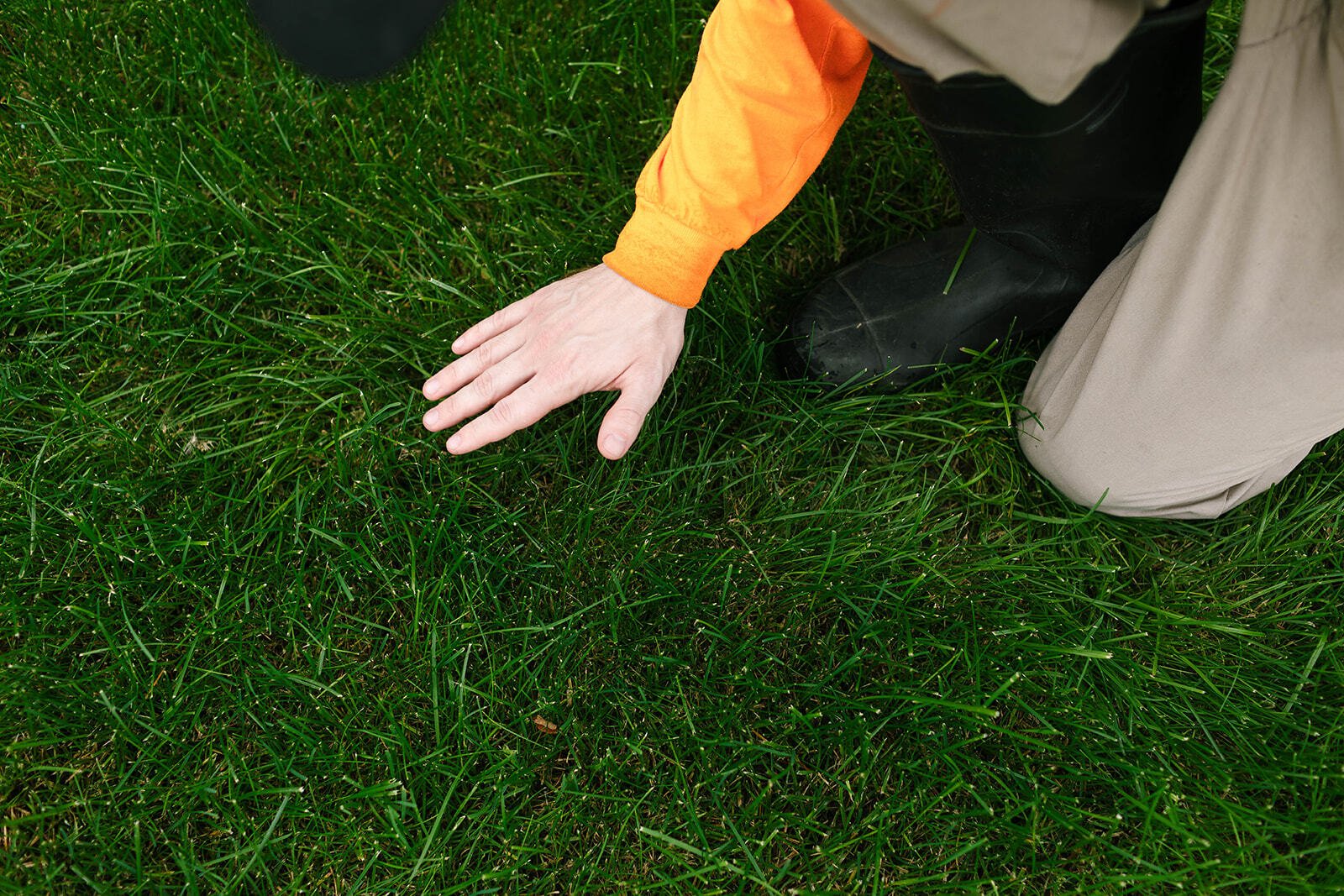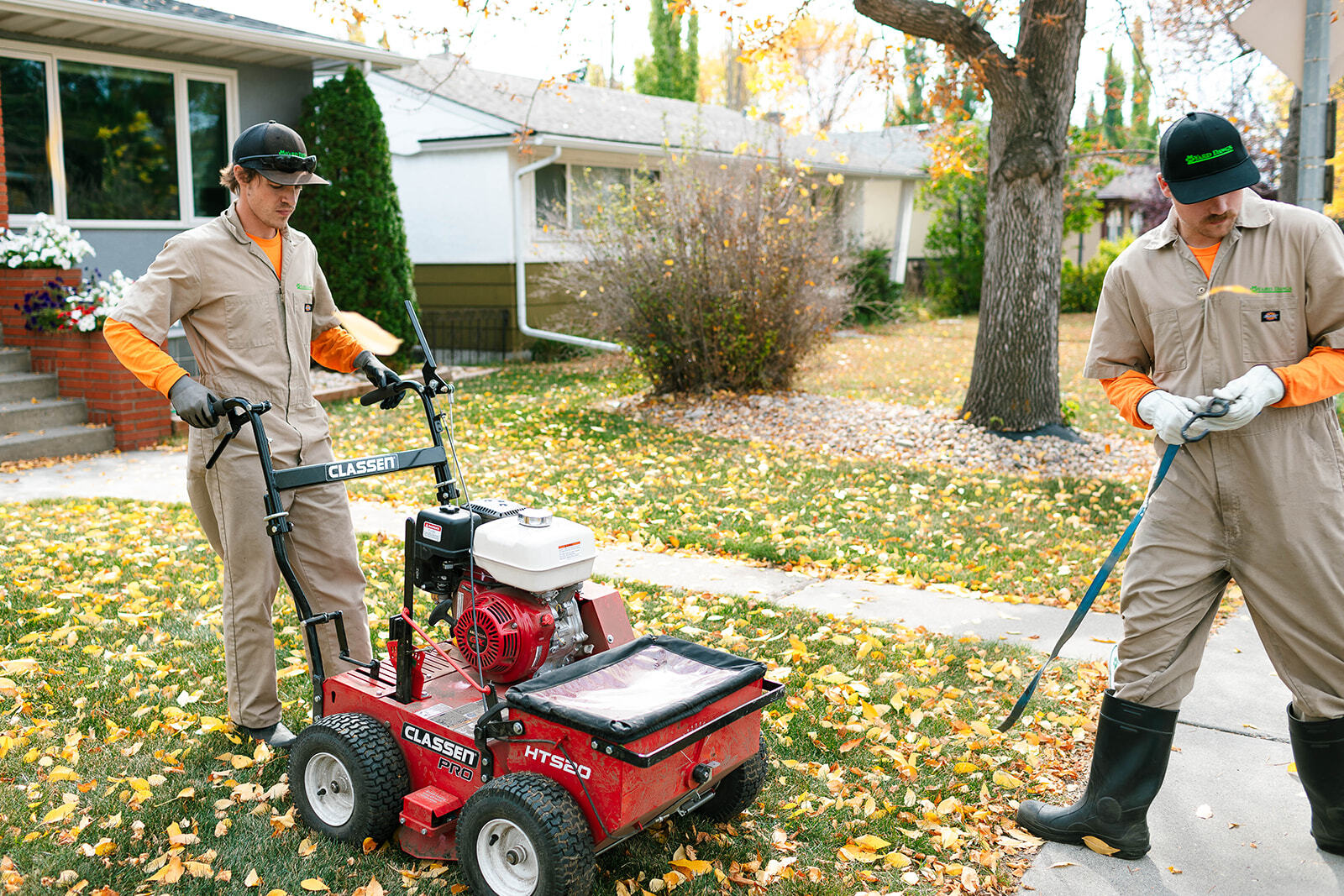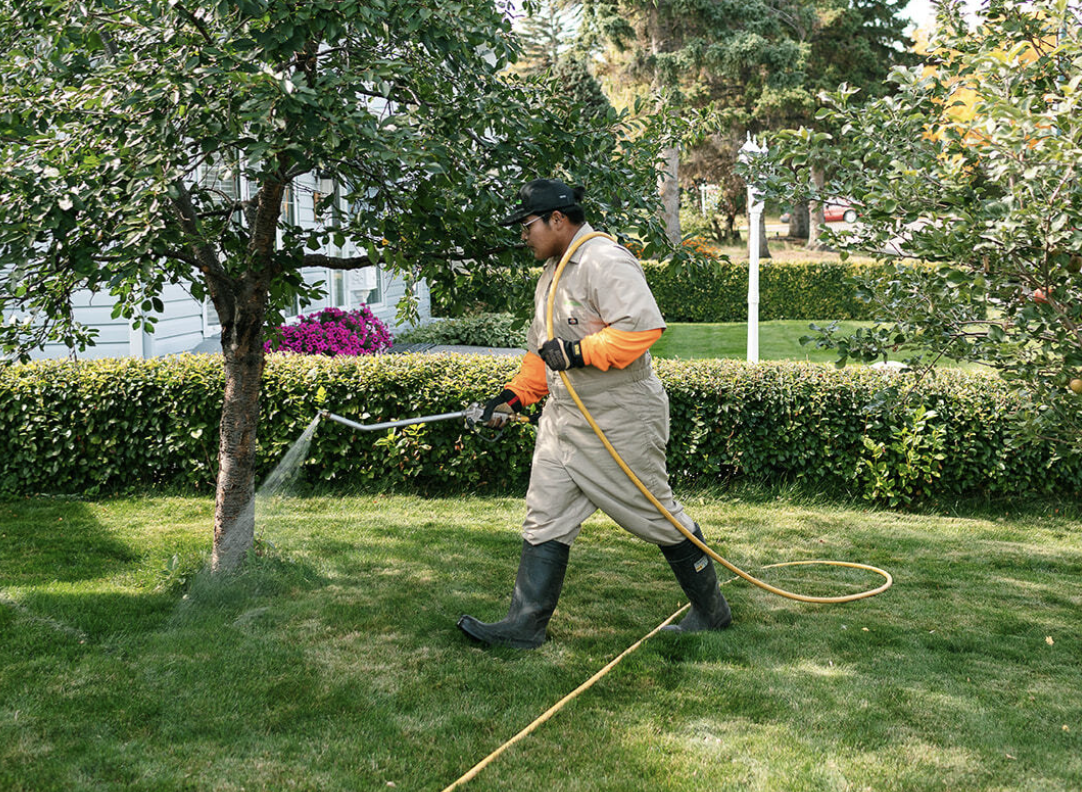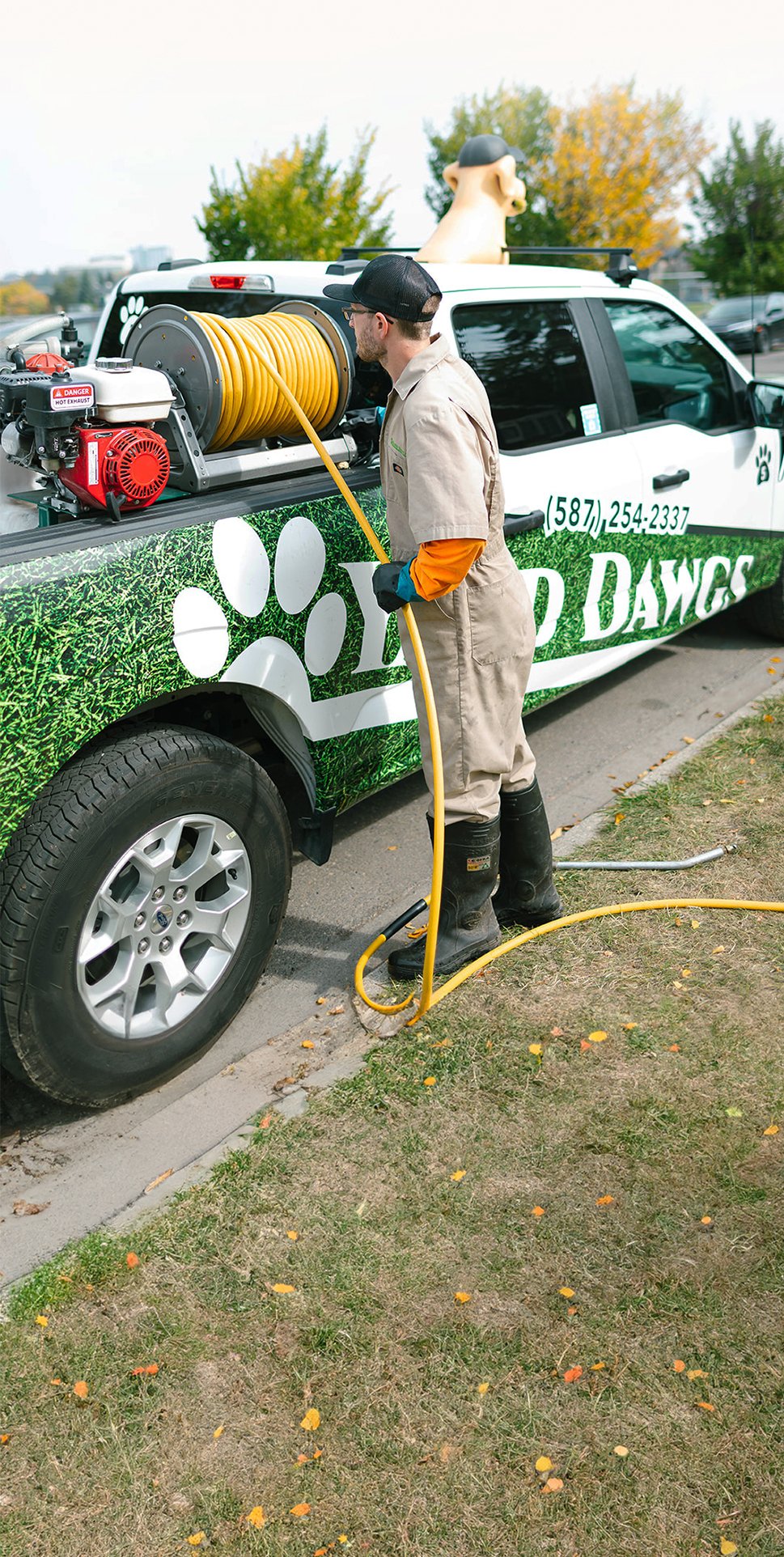A healthy, lush lawn can quickly lose appeal when creeping weeds take over. These aggressive invaders spread fast, suffocate grass, and are difficult to remove once established. Understanding how to spot and treat these unwanted plants is the first step toward reclaiming your turf.
Whether you are dealing with patches of clover or a full-blown takeover by Creeping Charlie, early action is key. Let’s look at how to identify the most common creeping lawn weeds in Alberta and Saskatchewan, and the best methods to remove them for good.

What Are Creeping Lawn Weeds?
Creeping lawn weeds are low-growing, fast-spreading plants that move across your lawn horizontally. Unlike upright weeds that grow in a single spot, these spread by runners or rhizomes, often forming mats that choke out healthy grass.
Because they hug the ground, they are resistant to mowing and can hide under your grass canopy, making them tough to detect until they are widespread.
Common Types of Creeping Weeds in Alberta and Saskatchewan
Clover (White Clover)
Clover is one of the most recognizable creeping weeds. It thrives in under-fertilized soil and is often seen as small white-flowered patches.
How to identify it
Clover has three rounded leaflets and spreads quickly through stolons (above-ground runners). It blooms in the spring and summer and is often found in thin or compacted areas of the lawn.
Why it spreads
Clover is nitrogen-fixing, meaning it can survive in poor soil conditions where grass struggles. This gives it a competitive edge in neglected areas.
Creeping Charlie (Ground Ivy)
Creeping Charlie is a tough-to-control weed that thrives in shady, moist areas.
How to identify it
It has scalloped leaves, purple-blue flowers in spring, and grows in a dense, spreading mat. Its stems root at the nodes, making it extremely hard to pull up completely.
Why it spreads
It tolerates low mowing, resists many common herbicides, and quickly regrows from any fragments left in the soil.
Other Common Creeping Weeds
Speedwell
Small, creeping weed with blue flowers and rounded leaves. It prefers moist soil and spreads through both seeds and creeping stems.
Creeping Buttercup
Recognized by its bright yellow flowers and glossy leaves, it thrives in wet or poorly drained lawns.
Purslane
A succulent-like weed that spreads low to the ground, often found in dry or compacted soil areas.
How to Remove Creeping Weeds from Your Lawn
Manual Removal
This is a good first step for small patches or early infestations. Use a weeding tool to dig below the roots and remove the entire plant. Be sure to remove all runners or rhizomes, as even a small piece left behind can regenerate.
Tips for hand-pulling:
- Pull after a rainfall when the soil is soft
- Use a narrow spade or weeder tool to follow the roots
- Dispose of pulled weeds carefully to prevent spreading
Improve Lawn Health
Creeping weeds often thrive in poor lawn conditions. By boosting your turf’s health, you naturally make it harder for weeds to take hold.
Steps to strengthen your lawn:
- Mow at the correct height to shade out weeds
- Fertilize regularly to feed the grass and not the weeds
- Aerate compacted soil in spring or fall
- Overseed bare or thin patches
Use the Right Herbicide

Not all herbicides work on creeping weeds, especially those like Creeping Charlie. Look for a selective broadleaf herbicide containing triclopyr or dicamba for best results.
Application tips:
- Apply on calm, dry days when temperatures are moderate
- Avoid mowing immediately before or after spraying
- Water only after 24 hours to allow full absorption
Always follow label instructions closely, and consider spot treatment for targeted control.
Preventing Future Infestations
The next step is prevention once you have removed the current weed problem. Consistency in lawn care is the best defense.
Ongoing prevention methods:
- Keep the mowing height higher to block sunlight from reaching weed seeds
- Reseed annually to keep the turf thick and healthy
- Address drainage issues to prevent conditions that promote weed growth
- Use mulch or ground cover in garden beds to suppress weeds
If you consistently maintain your lawn and treat problem areas early, creeping weeds will have a much harder time returning.
When to Call in Professional Help
Some weed infestations can be too far along for DIY methods to work effectively. If your lawn is overrun or you are unsure which weeds you are dealing with, it may be time to call in experts.
Professionals bring:
- Correct weed identification and targeted treatment
- Commercial-grade herbicides are not available to the public
- Full lawn care strategies to restore healthy turf
Hire Professional Lawn Care Services in Alberta and Saskatchewan
If creeping weeds have taken over your yard, our Yard Dawgs Lawn Care team is here to help. We specialize in weed control and full-service lawn care tailored to the unique climate of Alberta and Saskatchewan.
From accurate weed identification to customized treatment plans, we handle it all so you can enjoy a lush, weed-free lawn. Let us take the stress out of lawn maintenance and restore your turf to its best condition.


